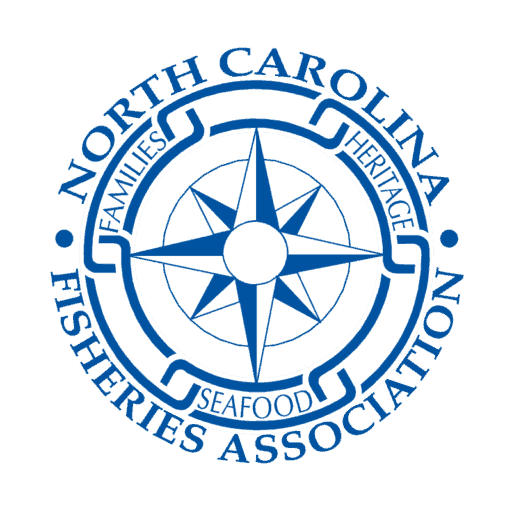Proposed shrimp trawl area closures to “protect” submerged aquatic vegetation (SAV).
Once again, the North Carolina Marine Fisheries Commission (MFC) will be discussing adopting further regulations for North Carolina’s shrimp trawl fishery. At the February MFC meeting they will be reviewing recommendations from the Division of Marine Fisheries to close numerous areas to shrimp trawling to “protect” SAV.
For more information on the importance of SAV, areas recommended for closure, and DMF’s justification for the recommendations go to page 327 of the “February 2024 Business Meeting Briefing Materials” and read the “Protection of Critical Sea Grass Habitat Through Shrimp Trawl Area Closures” issue paper.
While the NCFA shares fishermen’s concerns over the areas DMF wants to close to trawling our primary concerns are not with the specific areas DMF wishes to close. Our concerns are, first, are the areas closures, any of them, necessary, and second, is the process proposed for implementing these closures, specifically proclamation authority, legal?
Are these closures necessary?
According to DMF staff, their goal is to protect and restore SAV to its historic extent. That said, in order to answer the question above, you have to ask another question.
Will the recommended closures prevent further degradation of, or promote the expansion of SAV? The short answer is, no one, not even DMF, knows!
DMF staff stated, in their issue paper, that “while closing areas of critical SAV habitat allows for calculation of how much additional habitat will be protected from direct physical disturbance from shrimp trawls, overall and additional benefits to SAV are difficult to quantify. In the absence of shrimp trawls, SAV growth may continue to be impaired by poor water quality, climate change, disease, or other natural disturbances.”
Simply put, if the closures are implemented, DMF can say these areas are “protected” but cannot say whether any real protections have been realized!
In our opinion, for the State to assume shrimp trawling is impacting SAV but claim they can’t quantify any potential benefits to SAV, from trawl closures is inexcusable. Over one million acres of North Carolina’s estuarine waters, that were once trawled, are currently permanently closed to trawling. While the most recent trawl closures have only been in place for two years, other areas have been closed for several decades, and some water bodies haven’t been trawled in most of our lifetimes. That’s right, while many areas of the state are open to shrimp trawling and being trawled, some occasionally and others more regularly, half of our estuary has been permanently closed for varying lengths of time.
There is no better case study, for assessing and quantifying the benefits of trawl closures, for “protecting” SAV, than in North Carolina!
Has SAV benefited from past closures?
Exactly what will be gained if the MFC adopts the Divisions recommendations?
What do we stand to lose if the MFC fails to act on DMF’s recommendations?
So far, the Division has failed to provide any estimates, whatsoever, of what will be lost or gained from inaction or action by the MFC!
In our opinion it is absurd to propose any new closure until these questions have been definitively answered. Until then, any additional closure would be arbitrary, at best, and therefore unnecessary and unjustified.
Proclamation Authority?
If the Commission chooses to adopt the recommended area closures, they will be implemented through a proclamation issued by the DMF Director. Under State Statute, it is legal for the MFC to delegate to the Fisheries Director the authority to issue proclamations suspending or implementing rules of the Commission, but those rules must be affected by variable conditions, meaning there is reason to believe the rule may change in the future.
During the Habitat and Water Quality Advisory Committee meeting, we asked if these proposed closures were meant to be permanent or would these areas be reopened to trawling, DMF staff confirmed, on the record, that their intention was a permanent closure.
Where are the variable conditions in a permanent closure?
Permanent is defined as lasting or intended to last or remain unchanged indefinitely and that’s just what DMF intended when they made these recommendations.
There are no variable conditions in a permanent closure!
Of course, when asked why they thought proclamation authority could be used to implement a permanent closure, DMF staff scrambled to come up with possible scenarios where the closures, they just admitted were meant to be permanent, may be reopened. One senior staff member even told me that since a proclamation could be changed by a new Director, in the future, that alone represents a variable condition.
Really?
As we interpret Statute, variable conditions, which may require timely changes to a rule, must be known and predicted to occur before a rule can be implemented by a proclamation, if not the rulemaking process must be used. Simply issuing a proclamation does not constitute a variable condition, the variable condition must be intended and foreseen prior to issuing the proclamation.
If not, why would we have both proclamation authority and the rulemaking process?
We view the use of proclamations in this manner as a means to circumvent the rulemaking process, nothing less, and are greatly disappointed by DMF’s disingenuous attempts to justify their use in this situation.
We can only hope that the members of the Marine Fisheries Commission recognize both the arbitrary nature of these recommended closures and the need for restraint, when using such a powerful tool as proclamation authority when deliberating this very important issue.
Striped Mullet
We’ll keep this one brief as we’ve touched on this issue several times. Since 2019, the last year in the mullet stock assessment, all signs point toward a rapidly expanding stock and, whether incorporated into the stock assessment or not, this data needs to be considered when developing management for this species. Striped Mullet harvest is very important to the coastal economy, supporting both recreational and commercial fishing businesses. Tackle shops, piers, guides, seafood dealers, and fishermen are all small businesses and decisions managing those businesses should be made based on the most recent data, not data that’s four years old. No small business owner would make business decisions based on a profit and loss report from four years ago and the State shouldn’t either. The most recent stock assessment does not reflect what’s actually occurring in this fishery, but management should.
Just like most fisheries, a small business can go from bust to boom very quickly, and in order to avoid investing in a struggling business or missing out on opportunities to expand, decisions must be made based on the most current information. For the State to continue to manage fisheries based on old data, as if they’re really managing fish not people is inexcusable!
No one is saying don’t manage this fishery, just manage it in a manner that strikes a balance between what the industry needs and what you think the stock needs, based on the most recent data.
Proposed Rule for False Albacore
The title should probably read “FALSE Proposed Rule for False Albacore”!
So, what is this proposed rule for?
The proposed rule states that if the overall harvest (both recreational and commercial) exceed 200% of the five-year harvest average from 2018-2022, the Fisheries Director shall issue a proclamation to set recreational bag limits and commercial harvest limits the following year until the combined harvest goes below the 200% 5-year average.
No other guidelines, no looking at trends, no analysis, no going through any regulatory processes. Just a trigger that gives authority to one individual to decide how to set regulations for false albacore.
So why propose rule making with proclamation authority for a species before going through a fishery management plan (FMP)? Is this how we are going to start managing all species in North Carolina?
Why should one sector be responsible for restricting harvest of the other sector? Recreational data (MRIP) is most likely going to change again in the near future. What if the change in data immediately sets off the trigger?
What is the size of the false albacore population? What is the maximum sustainable yield? How do we know the limits set by the Director will be sustainable for false albacore if harvest increases and the trigger is met?
There are too many “what ifs” with this proposed rule. Nothing in this rule makes any sense for managing a fish stock.
Thomas Newman
Fisheries Liaison
MFC Meeting This Week
The North Carolina Marine Fisheries Commission (MFC) will meet February 21-23 at:
DoubleTree by Hilton Hotel New Bern Riverfront
100 Middle Street, New Bern, NC 28560
The meeting will also be able to viewed online at this link: Join the Meeting Online
Public Comment
In person public comment can be made at 6 pm Wednesday, February 21st and at 9 am on Thursday, February 22nd.
Written public comment can also be submitted:
Online: Submit written comments online
Mailed: mail to February 2024 Marine Fisheries Commission Meeting Comments, P.O. Box 769, Morehead City, NC 28557
Dropped off: at the Division of Marine Fisheries’ Morehead City Headquarters Office at 3441 Arendell Street, Morehead City.
Written comment must be received by 4 pm Monday, February 19th.
Meeting Materials
Meeting agenda: Meeting Agenda
Complete briefing book: Complete Briefing Book

